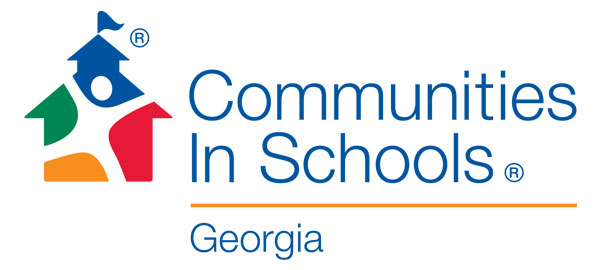Our new impact report highlights what Communities In Schools (CIS) of Georgia, part of the nation’s largest and most effective dropout prevention organization, is doing to provide practical, affordable solutions to help students in Georgia stay in school and succeed. The report, “Changing the Picture of Education in Georgia,” features stories, data and outcomes. Also included in the report are results of a national teacher survey. According to the survey and CIS leaders, underserved youth can achieve academic success and achieve in life if they have caring adults providing supports and services that address academic and non-academic barriers to learning.
The number of Georgia’s children living in poverty is on the rise and those conditions pose a different set of challenges for kids. Since youth from low-income households now make up the majority of students in public schools, you might guess that many of these students and their families will have a dependence on social services, lack proper clothing and essential supplies including food, which could affect learning and lead to poor health or chronic illnesses.
The stories profiled in the report demonstrate the organization’s proven success for addressing both the academic and nonacademic needs of students and their families. More specifically, Roberta Graham received the CIS of Georgia Site Coordinator award for exemplary work in helping students succeed in school. And a CIS alum, Fredrick Bailey, is also profiled in the report. Fredrick graduated high school despite tremendous obstacles that could have derailed his education. He went on to college, graduated and is now working as an Academic Advisor at Clayton State University.
We know today’s classrooms are vastly different from past years. In today’s learning environment, students are expected to not only learn the basics of reading, writing and arithmetic, they also must acquire skills to think critically, communicate clearly, master technology and solve problems creatively. It’s hard to prepare for these tasks if you carry the challenges of poverty with you to the classroom, and it’s creating huge challenges.
Our teachers need partners to support these high needs students and the survey reinforces this fact. They welcome organizations like CIS who have trained professionals that bring services and resources into the schools, supporting teachers and kids, which allows educators more time to focus on teaching.
In the report you will also read about simple policy measures that would allow state and federal funds to be used for integrative support services, like those provided by CIS. You can help by advocating for a policy shift in the way our federal and state funds are spent. With our nation’s legislators recently passing the latest version of the ESAA (Elementary and Secondary Education Act, now known as Every Student Succeeds Act), it shifts education policy activity to the states. The passage of ESAA represents a breakthrough. It follows years of debate about the right balance of federal vs. local influence in public education. This new legislation will give our local schools more flexibility to decide what works best for our students.
Equally important is new language, tucked into the law, about a program known as Title 1. It’s a program that invests critical resources to educate the poorest children in our community. ESSA specifically allows Title I funding for “integrated student supports” that seek to remove the educational barriers that low-income students so often endure: hunger, homelessness and the lack of caring adult in their lives.
The Communities In Schools of Georgia network has been providing this kind of support for nearly 40 years. In the 2014-15 school year, 95% of potential dropouts stayed in school, 90% of seniors graduated, and 97% of elementary and middle school students were promoted to the next grade level. This leaves no doubt that all students can flourish when their social, emotional and physical needs are being met.
Congress has sent a clear message that K-12 education ought to be one priority we all can agree on—especially when it comes to educational opportunities for our most vulnerable young people.
Join our educational movement today to help educators build the state’s talent pipeline by advocating for the use of research-based, integrated student support services for those with high needs. This will ensure all Georgia’s students have an opportunity to succeed and reach their full potential.
